Description and cultivation of "Caesar" roses
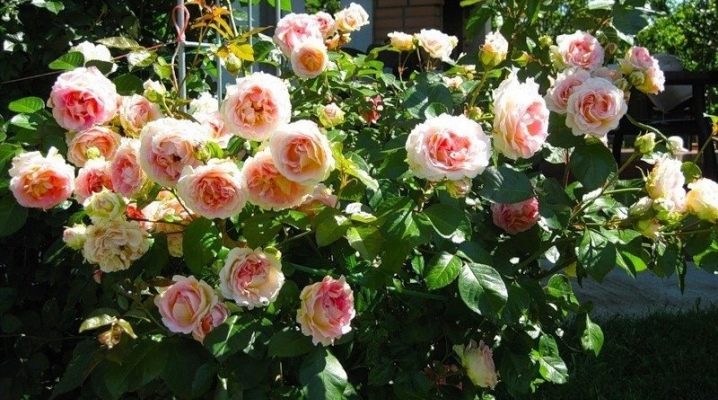
Some varieties of selective species of roses are called "climbing". The fact is that in such plants, the stems are longer than the usual bushy rose. Climbing rose shoots hang down or cover any surface with a creeping cover. It is customary to refer to climbing varieties some types of rose hips and certain varieties of garden selection roses. One of the widely known varieties of the climbing rose is the Caesar variety.
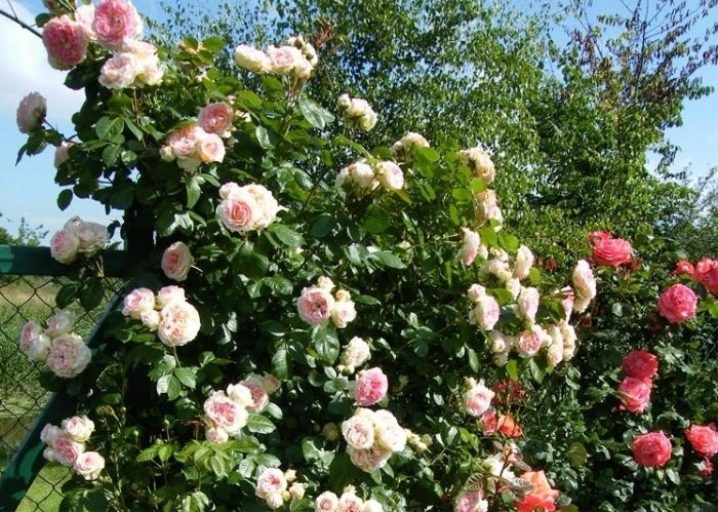
Features and Description
The Caesar variety was bred in France in the 90s of the last century, literally in a decade it has become popular and known in almost all countries of the world. Today, every encyclopedia dedicated to the types of roses contains a mandatory description of the Caesar variety.
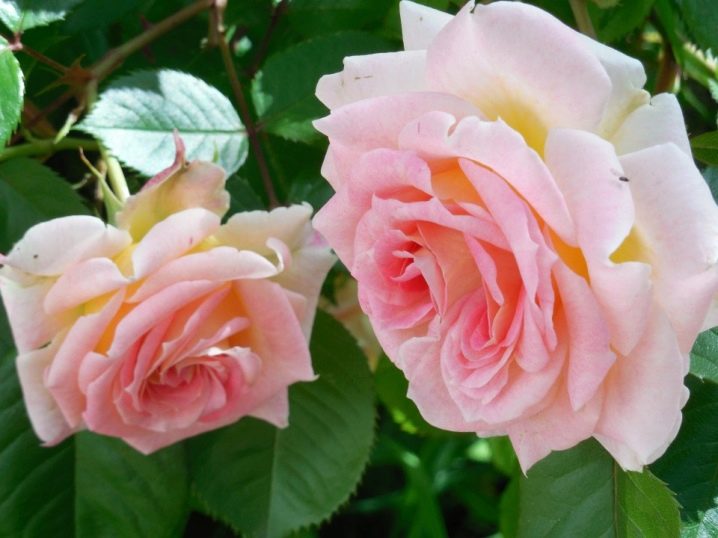
The main feature of the variety is that up to five buds are located on the flowering shoots. Each bud, after opening, turns into a flower of a pale pink color, having a diameter of 7 centimeters. And there are quite a few such flowering shoots in the bush. Growing, the plant can reach a height of up to two meters, and sometimes up to three meters wide. Rose "Caesar" was created taking into account the resistance to many diseases - it is rarely affected by fungal diseases, powdery mildew. This variety, under favorable climatic conditions, blooms twice a season: the first wave of flowers blooms in late May - June, and the second wave of flowering begins in August.
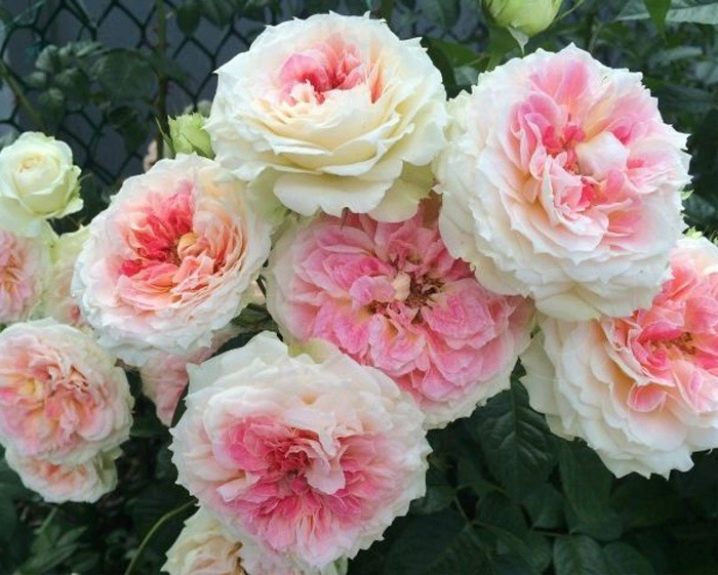
The flowers of the Caesar rose are two-colored, pinkish-white, darker towards the corolla, have a large number of petals: their number reaches 40 in each peduncle. All flowers of the rose are double, they remain fresh for a long time and do not crumble after the full opening of the bud. In addition, the rose exudes a sweetish-tart aroma and attracts pollinating insects. Due to the fact that there are a lot of large flowers on each branch, outwardly such a bush creates an unforgettable impression and is successfully used by decorators and landscape designers.
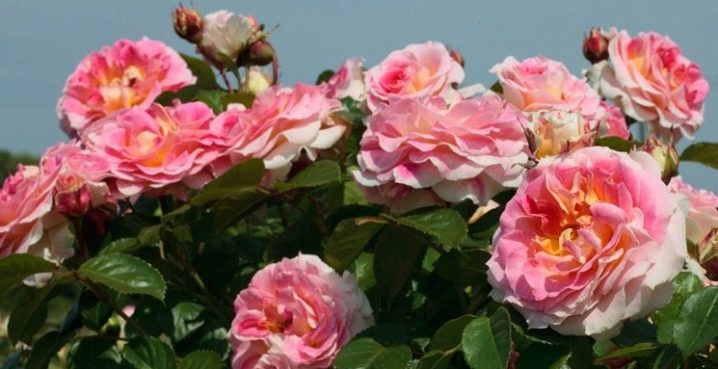
The climbing rose was bred and intended to grow in warm and sunny climates.
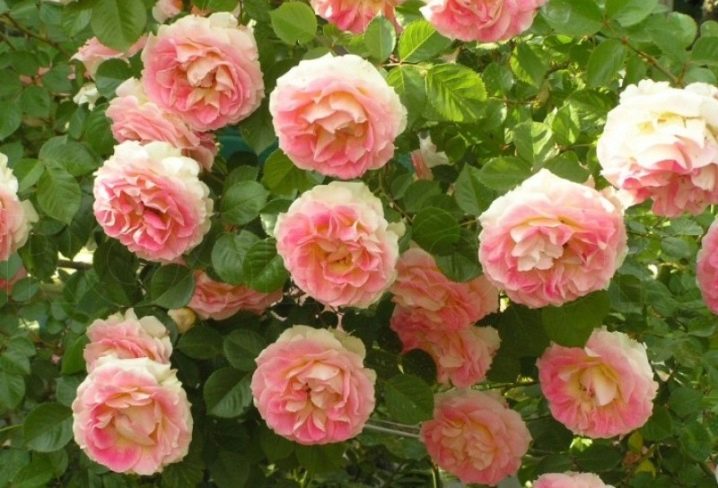
Due to this feature, the plant has poor resistance to low temperatures, winds and prolonged periods of precipitation. If the plant enters a region where the air temperature can drop to below 20 degrees Celsius, and there can also be abundant and prolonged rains, then the plant loses its resistance to fungal diseases, begins to stagnate and eventually loses its decorative attractiveness.

General principles of care
Despite the fact that a plant with the right climate for it is able to withstand many diseases, it needs care. This unpretentious variety loves spacious areas when planting so that there is enough space for air circulation and successful growth of shoots. For each bush, breeders are advised to allocate at least 2.5-3 square meters of land. But that's not all. "Caesar" does not tolerate excess moisture near its root system, therefore, before planting this plant in your area, you need to know the depth of groundwater. Ideally, a rose needs groundwater to pass at a depth of at least two meters.

When choosing a place for planting a climbing rose, pay attention to the fact that other varieties of roses do not grow next to it, and the site is well lit by the sun's rays.The proximity of other varieties of roses and the close location of fruit bushes can increase the risk of infection with various diseases and the number of attacks by parasitic insects. The best place to grow "Caesar" will be a small hill with a slope. This will provide the plant with the necessary outflow of excess moisture. In addition, it is worth remembering that this variety has a very well-developed root system, therefore it is not recommended to plant a plant near capital buildings. It is best to do this at a distance of 60-100 centimeters in order to allow the roots to form freely and get enough nutrients.

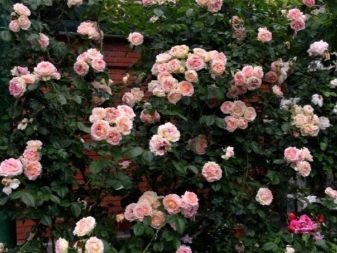
Due to the fact that the climbing rose "Caesar" is famous for its abundant flowering, each branch has a rather large load. Large double flowers contribute to the fact that the shoots bend under their weight to the ground. In this case, the decorative appearance of the bush may deteriorate noticeably, and the branches may break off. To avoid this, experts in the cultivation of roses advise creating supports for long shoots, with which you can not only weaken the weight load, but also form the direction of growth of the shoots.
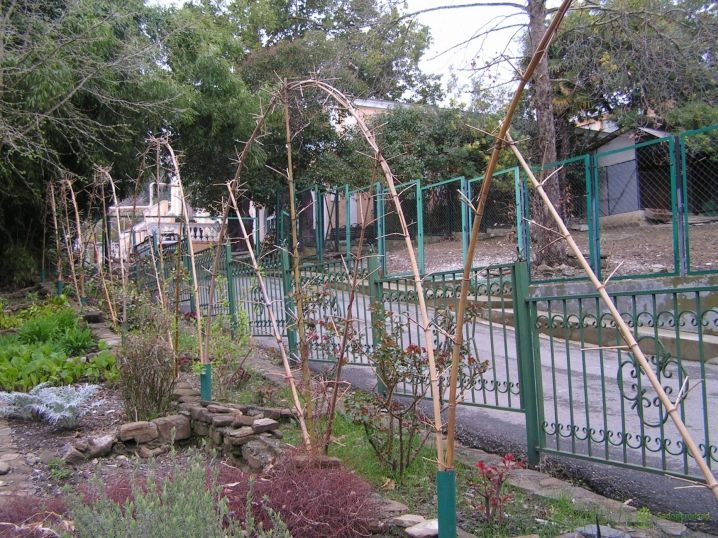
A very important point in the care of climbing roses is their timely pruning before the onset of the winter cold.
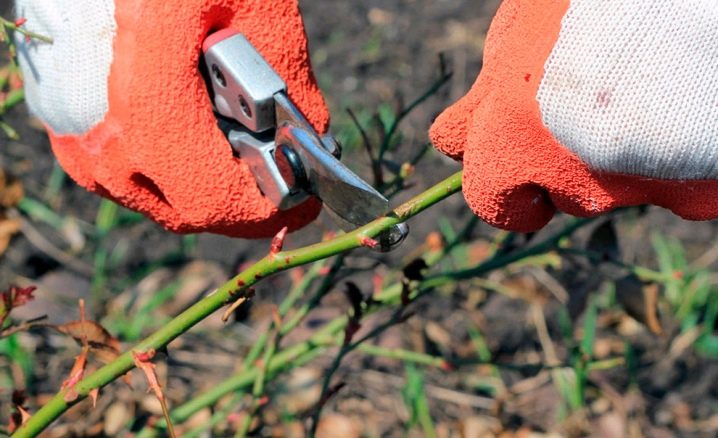
After the roses have bloomed, you need to remove the broken and dead shoots. Branches that are older than three years are also subject to removal. The fact is that after 3 years, few buds appear on the shoots, but they take nutrients from the plant, inhibiting the development and flowering of young branches. After such pruning in the spring, as a rule, a lot of young growth appears and the rose bush becomes very voluminous.
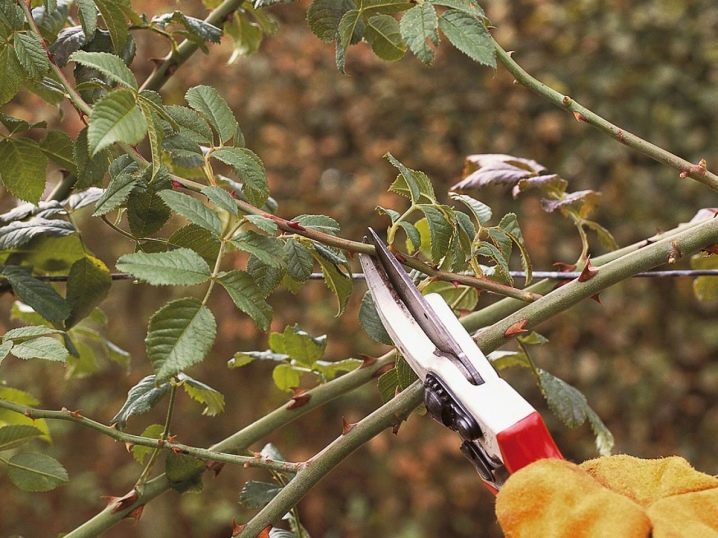
At the end of autumn, before the onset of the first frost, the rose needs to cover its shoots. At the same time, the props are removed, and the branches themselves are bent to the ground, covering them with spruce branches or special non-woven agrofibre. Sometimes a shelter is made around the bush in the form of a hut made of boards, which will keep the bush from wind and other damage.
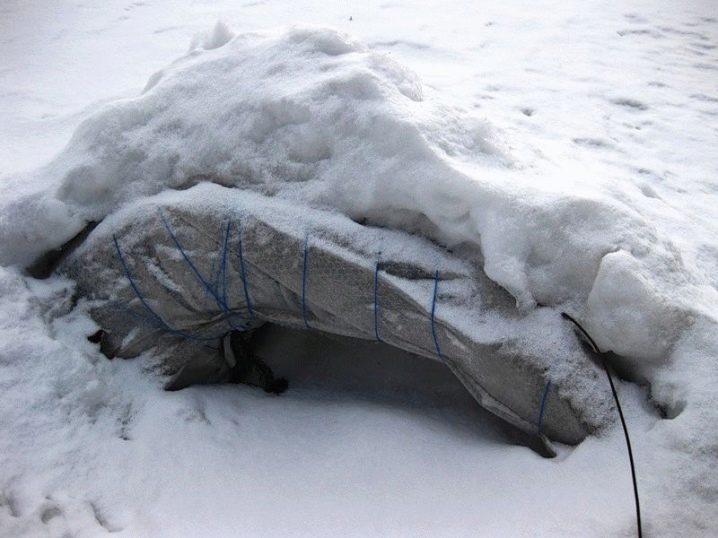
How to grow?
Growing a varietal climbing rose in your area is a simple and very interesting business. The most important thing is to purchase high-quality and healthy planting material from a nursery with a good reputation. Planting a seedling can be done both in autumn and in spring. It is believed that the best time is early spring, since during the summer period the rose will have time to form a good root system and get used to new conditions.
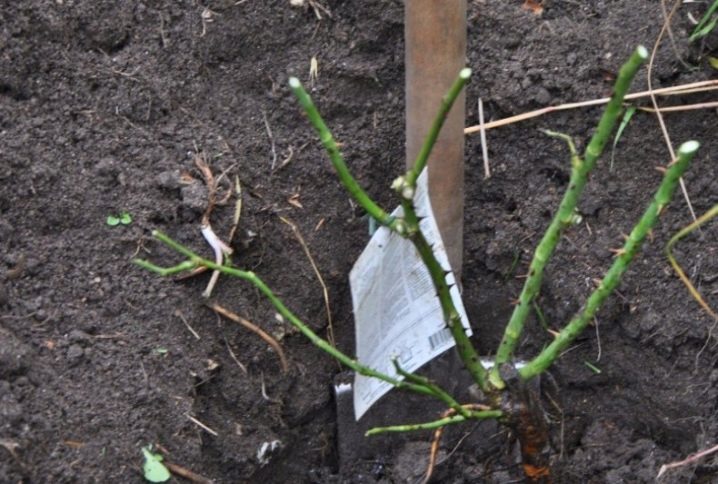
Having decided on the choice of a planting site, you need to prepare the seedling itself. To do this, it is soaked in water containing growth stimulants for about 8-10 hours. It is strongly not recommended to plant a seedling with a dry root system in the ground. After the roots of the plant are saturated with moisture, they need to be straightened and dead or broken roots removed.
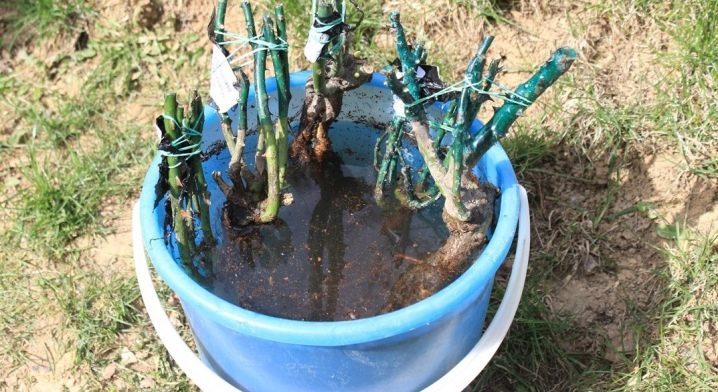
For planting a climbing rose, a hole is preliminarily prepared in the ground with a size of 50x50 centimeters. At the bottom of the hole, phosphate fertilizers are placed, stimulating the growth of the root system, compost, peat and sprinkled with crumbly earth on top of them, to which you can add a small amount of lime. If the soil is too loamy, sand is added to it. Planting a seedling is carried out to a depth of no more than 25–35 centimeters, while you need to ensure that the roots are straightened and located freely. It is important to pay attention not to deepen the grafting site of the seedling by more than 10-15 centimeters.

After the seedling of a varietal rose is planted in a permanent place, a small mound of earth is made on the surface of the earth near the root system in the form of a mound. This is necessary in order for the root system to better take root and take root in a new place. After a couple of weeks, this roller can be smoothed out. When planting, the soil must be thoroughly shed with water.If the soil has shrunk significantly, it is necessary to add soil around the plant, making sure that the root rosette is not exposed. In addition, the soil around the rose bush is often mulched to retain moisture and nutrients.

In order for the rose to take root well, in the first year of its life, it is recommended to remove all the buds in order to allow the plant to grow stronger and gain strength.
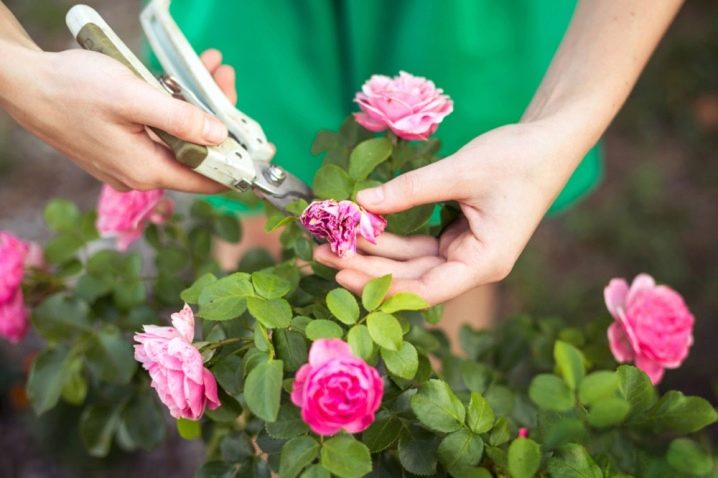
To fertilize climbing roses, mineral fertilizers or an organic solution are used, such dressings are made at least twice a year, including foliar dressing.

With proper care and the appropriate climate, the Caesar rose will become a worthy decoration of your site and will delight you for many years with its unusual flowers.

For more information on Caesar roses, see the video below.

































































































The comment was sent successfully.